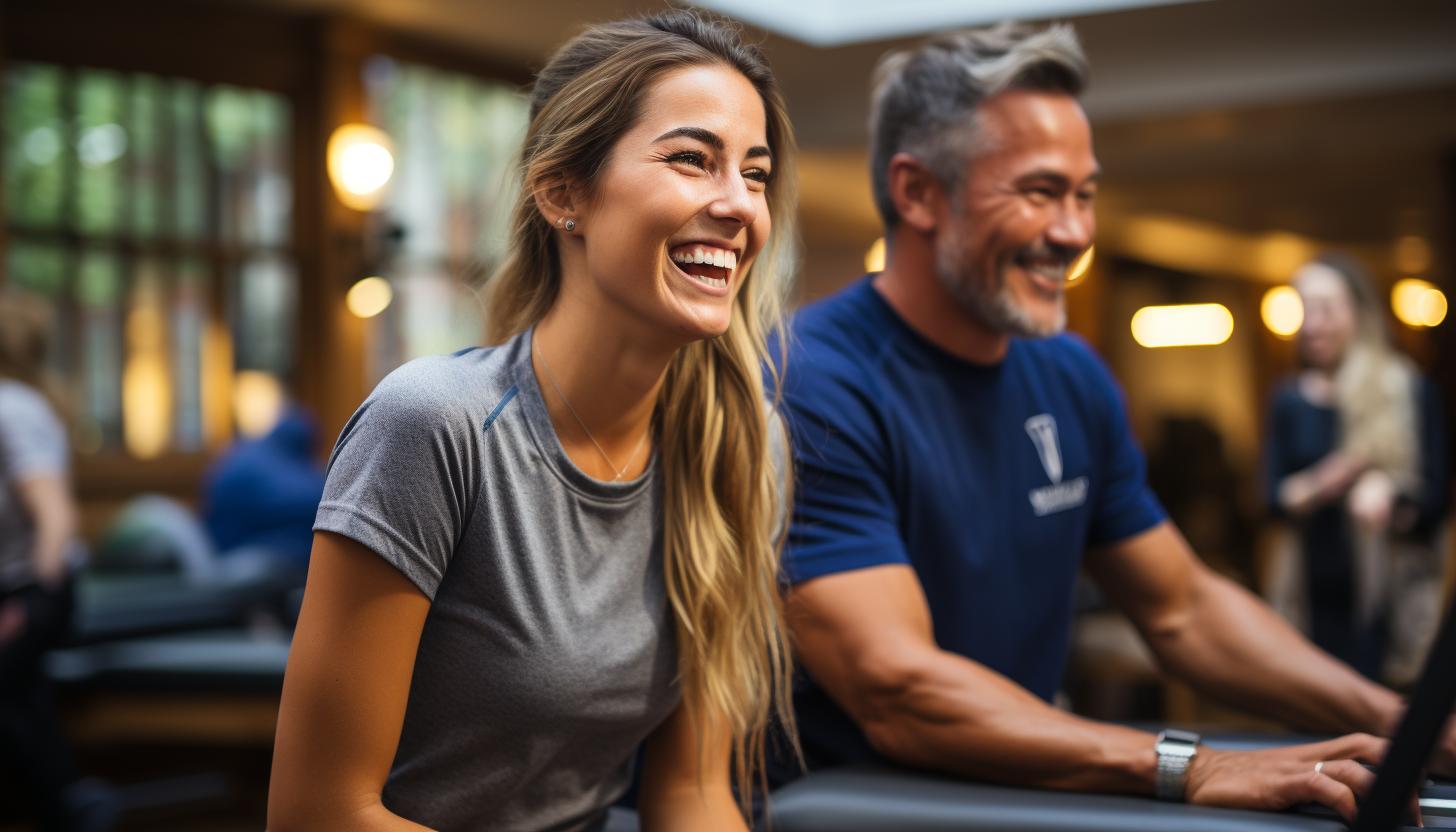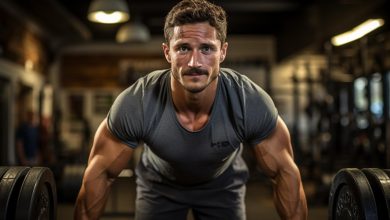The Benefits of Pilates for Runners: Strengthening and Injury Prevention

Are you tired of constantly battling injuries as a runner? It’s time to take your training to the next level with Pilates.
Discover how this dynamic exercise method can strengthen your muscles, prevent injuries, and enhance your running performance. By targeting specific muscle groups and improving your form, Pilates will help you become a more efficient and resilient runner.
Whether you’re a beginner or an experienced athlete, incorporating Pilates into your routine will revolutionize the way you train and recover.
The Role of Pilates in Enhancing Running Performance

Pilates can greatly enhance your performance as a runner by improving core strength and flexibility. When it comes to endurance, Pilates focuses on building strength in the deep abdominal muscles, which are essential for maintaining proper posture and stability throughout long-distance runs. The controlled movements and exercises in Pilates help activate these muscles, allowing you to maintain a strong and stable core even when fatigue sets in.
In addition to endurance, Pilates can also improve your speed as a runner. By targeting the smaller stabilizing muscles around the hips, pelvis, and lower back, Pilates helps improve overall body alignment and control. This increased stability allows for more efficient transfer of energy from the legs to the ground, resulting in improved running mechanics and faster times.
Moreover, Pilates emphasizes flexibility through its emphasis on controlled stretching movements. Flexibility is crucial for runners as it helps prevent muscle imbalances that can lead to injuries. By incorporating regular Pilates sessions into your training routine, you can increase your range of motion and reduce the risk of common running injuries such as strains or pulls.
Overall, adding Pilates exercises to your training regimen can have significant benefits for both endurance and speed as a runner. Strengthening your core muscles while improving flexibility will not only enhance your performance but also help prevent injuries along the way.
Targeted Muscle Strengthening for Runners Through Pilates

To improve your running performance and reduce the risk of injuries, focus on targeting specific muscles through targeted muscle strengthening exercises. Incorporating pilates into your training routine can be highly beneficial for runners as it helps improve flexibility and core stability, two key elements in enhancing performance and preventing injuries.
Here are three targeted muscle strengthening exercises that can specifically benefit runners:
1. Single Leg Squats: This exercise targets the quadriceps, hamstrings, glutes, and hip stabilizer muscles. It helps build leg strength and stability, which is essential for maintaining proper running form and reducing the risk of imbalances or overuse injuries.
2. Plank Variations: Planks are excellent for developing core strength and stability. By engaging your abdominals, lower back muscles, and hip flexors, you will enhance your overall posture while running. Try incorporating side planks or plank rotations to challenge different parts of your core.
3. Bridge Pose: This exercise primarily targets the gluteal muscles but also engages the hamstrings and lower back. Strengthening these areas improves power generation during running while reducing stress on the knees and ankles.
Incorporating these targeted muscle strengthening exercises into your pilates routine will not only enhance your running performance but also help prevent common overuse injuries by improving flexibility and core stability.
Pilates as a Tool for Injury Prevention in Runners

Incorporating targeted muscle exercises like single leg squats, plank variations, and bridge pose into your routine can help improve flexibility and core stability, reducing the risk of common overuse injuries in runners. Pilates is an effective tool for injury prevention in runners because it focuses on strengthening key muscles while enhancing flexibility. By incorporating Pilates exercises into your training, you can improve your body’s ability to withstand the repetitive impact of running.
One way that Pilates helps prevent injuries is by improving flexibility. Flexibility training is crucial for runners as it helps increase joint range of motion and reduces muscle imbalances. With improved flexibility, you are less likely to strain or tear muscles during your runs. Additionally, Pilates strengthens the core muscles which provide stability and support for the entire body. This reduces the risk of developing lower back pain or other common runner’s ailments.
To further emphasize the benefits of incorporating Pilates into your routine, consider the following table:
| Benefits of Pilates for Runners | ||
|---|---|---|
| Injury Prevention | Enhanced Flexibility | Core Stability |
| Reduced Risk of Overuse Injuries | Increased Joint Range of Motion | Decreased Lower Back Pain |
Improving Running Form and Efficiency With Pilates

Improving running form and efficiency can be achieved through regular practice of Pilates exercises. Pilates is a versatile form of exercise that focuses on enhancing posture and core stability, both of which are crucial for runners.
Here are three ways Pilates can help you improve your running form and efficiency:
1. Strengthening the core: A strong core is essential for maintaining proper posture while running. Pilates exercises target the deep abdominal muscles, as well as the muscles in the back and pelvis, improving overall core stability. This increased strength helps you maintain good alignment throughout your run, reducing strain on other parts of your body.
2. Enhancing body awareness: Pilates emphasizes precision and control in movement, helping you become more aware of how your body moves during running. By practicing specific movements that mimic running mechanics, such as leg circles or single-leg bridges, you can develop better coordination and muscle activation patterns, leading to improved efficiency.
3. Correcting imbalances: Many runners have muscular imbalances due to repetitive motion or weak areas in their bodies. Pilates exercises target these imbalances by working opposing muscle groups equally and addressing weaknesses in specific areas like the glutes or hip flexors. By correcting these imbalances, you can prevent injuries and optimize your performance on the road.
Incorporating Pilates into your training routine can be a game-changer for improving your running form and efficiency. By focusing on enhancing posture and core stability through targeted exercises, you’ll notice significant improvements in how you move when hitting the pavement.
How Pilates Can Help With Recovery and Rehabilitation for Runners

When recovering from an injury, Pilates can be a valuable tool for runners like you. Not only does it help in rehabilitation, but it also provides effective injury prevention methods. Pilates focuses on core strength, flexibility, and body awareness, all of which are crucial for a successful recovery and long-term running performance.
One of the key benefits of Pilates is its ability to target specific muscle groups that may have weakened or become imbalanced due to injury. This helps in restoring strength and stability while preventing future injuries. The controlled movements and emphasis on alignment also aid in improving posture and overall body mechanics, reducing strain on vulnerable areas.
To give you a better understanding of how Pilates can aid in your recovery journey, let’s take a look at this table:
| Rehabilitation Techniques | Injury Prevention Methods |
| Controlled Movements | Core Strengthening |
| Flexibility Training | Balance Training |
| Body Alignment | Proper Warm-up |
As you can see, Pilates offers a well-rounded approach to rehabilitation by targeting both the physical aspects of healing as well as providing preventative measures against future injuries. By incorporating these techniques into your training routine, you’ll not only recover faster but also improve your overall running performance. So why wait? Start incorporating Pilates into your recovery plan today!
Conclusion
In conclusion, incorporating Pilates into your running routine can have numerous benefits.
By strengthening specific muscles that are crucial for running, you can enhance your overall performance and reduce the risk of injuries.
Pilates also helps improve running form and efficiency, allowing you to run with greater ease and effectiveness.
Furthermore, it serves as a valuable tool for recovery and rehabilitation, aiding in the healing process after an injury.
So why not give Pilates a try? It’s time to hit the ground running and take your fitness journey to new heights!
Remember, Rome wasn’t built in a day, so be patient with yourself as you embark on this transformative journey.






